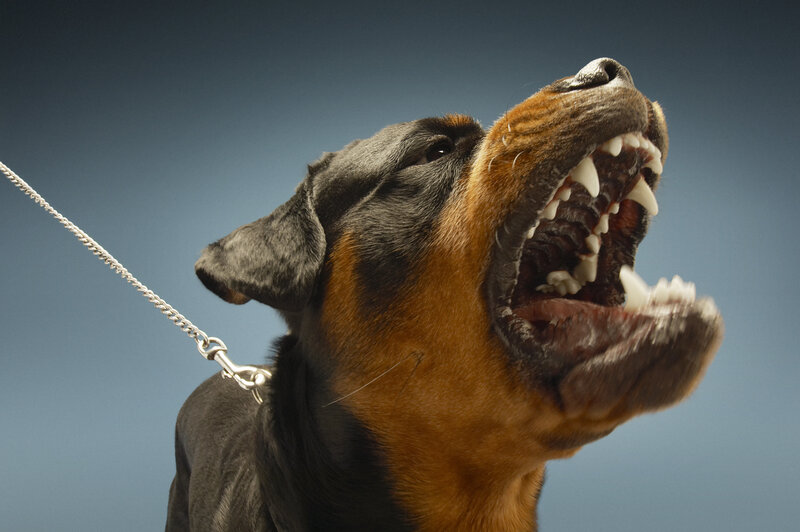
Dog aggression is more than just aggression; it’s a strong piece of communication. What we read as aggression is actually a dog sending an unambiguous and fluent message. As canine companions and providers, we must learn about the most common types of dog aggression to get to the root of the problem and support our beloved companions.
If your dog is exhibiting signs of more extreme aggression (baring teeth with menace, lunging, snapping, snarling, etc.), contact an experienced dog trainer ASAP, as this is beyond what anyone should tackle at home. Depending on the presenting behaviors, we’ll determine whether your dog needs in-home or doggie boot camp to fix the issue once and for all.
Learning to understand your dog’s communications, most of which happens via body language, is the first step in understanding why s/he’s behaving aggressively. Once we address the root of the problem, we can work with standard dog training methods and avoid triggers or desensitize the dog to these triggers, this will stop dog aggression once and for all.
Before we talk about the different types of aggression, it’s essential to learn how dogs communicate when they're feeling agitated, vulnerable, threatened, or angry - all of which lead to aggression. You’ll know your dog is primed for aggression when s/he:
Never ignore any signs of dog aggression in the hopes they’ll go away on their own. They do not. Consistent training and positive reinforcement are the only way forward.
Here is a list of the most typical reasons or causes of aggression in dogs.
Whether it’s their bed, food dishes, the house, or yourself, territorial dogs show signs of aggression toward anyone or anything that comes into or too close to anything considered “theirs.”
Like territorial aggression, possession aggression migrates over into the realm of what they think belongs to them, beyond space, such as you, their toys, or anything they happen to be chewing on, whether it’s theirs or not.
This is probably one of the most common sources of misunderstood aggression in dogs. Dogs confined for too long, who don’t get enough exercise, live with humans who are stressed or emotionally reactive or struggle being left alone accumulate stress and anxiety to the point that they can become aggressive. Or, in some cases, the same behaviors that result from separation anxiety/stress (growling, chewing and tearing things apart, excessive barking) are read as aggressive by the owners, resulting in unnecessary consequences for the poor dog. Dogs can also display aggression if they haven’t been socialized properly. They are fearful of people, other dogs, or new situations and can be aggressive because they feel that they need to protect themselves.
Not surprisingly, mama dogs will guard their puppies with their life. This aggression won’t be exhibited towards their immediate human companions unless they feel very threatened in most cases. However, a dog with puppies should be segregated from visitors or guests to protect her and them.
Like humans, dogs who are ill, not feeling their best, tired, or uncomfortable are more likely to be irritable, leading to aggressive responses if humans aren’t reading their physical cues.
A dog on a leash, contained in a small space, or shut in a car or crate may exhibit more aggressive signs than when they’re free because they feel trapped and vulnerable.
Dogs originated from wolves, predatory by nature since they hunt for food. Typically, this type of aggression is limited to small running creatures (rats, mice, squirrels, neighborhood cats, backyard chickens, etc.) until the dog is trained out of it. However, keep a close eye because dogs prone to predatory aggression may direct it on small children.
Dogs honor the pack's social code, which requires arguments, scuffles, and downright fights as the pack determine who is on top and the resulting order from top to bottom. However, social conflict can erupt at a dog park, on a neighborhood walk when encountering other dogs, or anywhere else, in small bursts, to settle skirmishes.
The professional and experienced team at Alternative Canine Training is here to support you. We’re happy to work with any dog and its owner, regardless of size or breed. We’ll identify what’s causing the aggressive behavior and create a customized training plan to support strong bonds and a calmer, gentler future together.